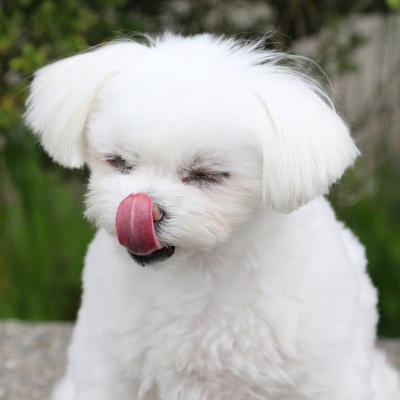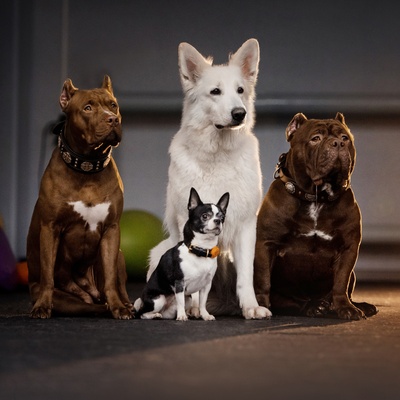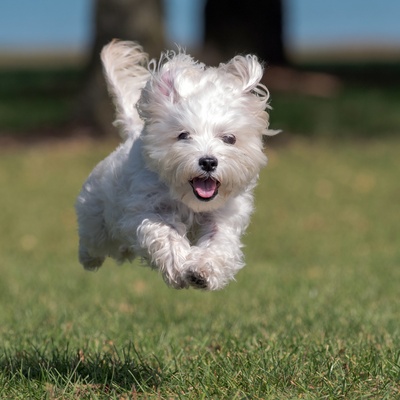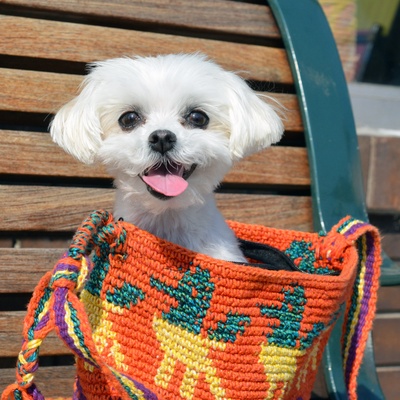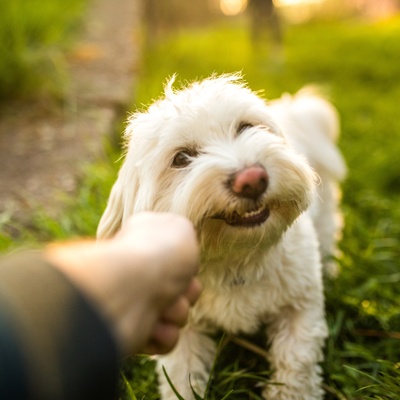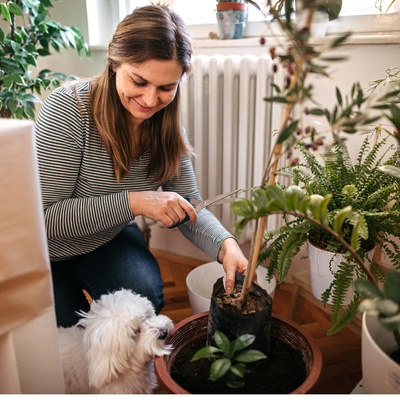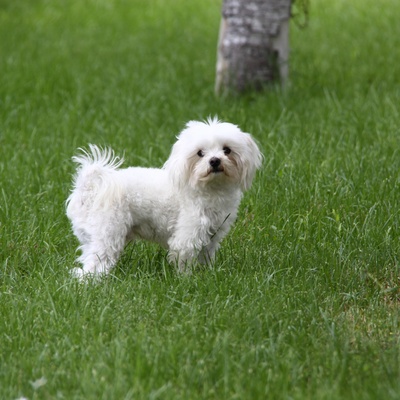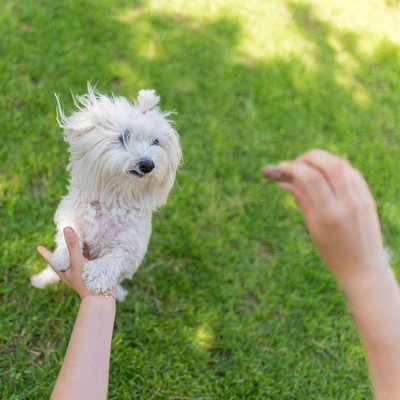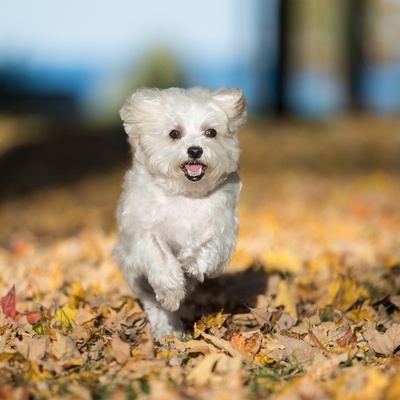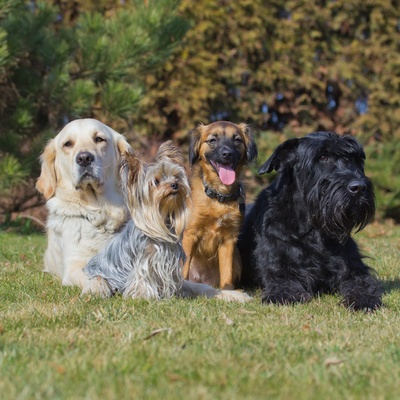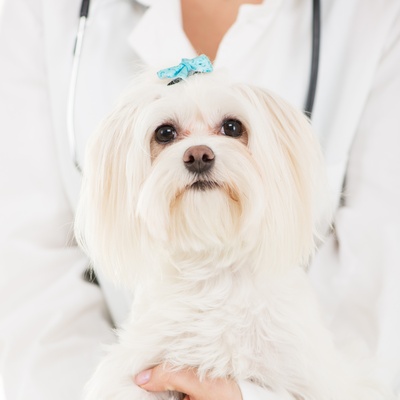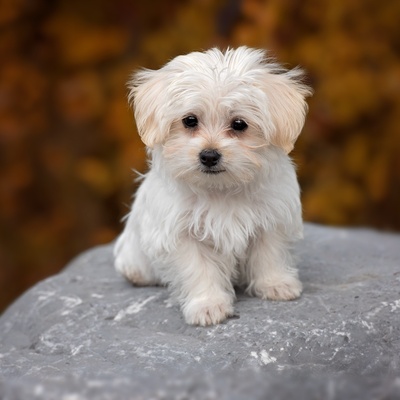Introducing the Maltese
Discover all there is to know about the Maltese: its characteristics, behavior, training, and its cost.
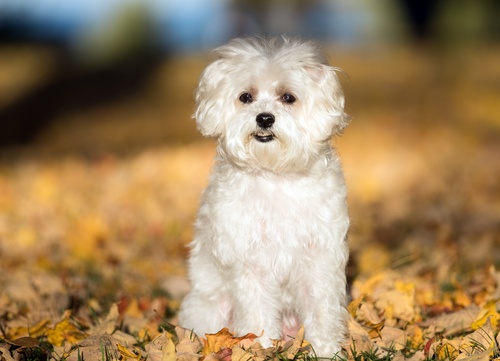
Discover all there is to know about the Maltese: its characteristics, behavior, training, and its cost.
The Maltese breed, with its roots tracing back to ancient Mediterranean civilizations, has long been cherished for its elegance and charm. Their bravery belies their diminutive size, and they demonstrate a remarkable adaptability to various roles, from being a loving lap dog to participating in competitive obedience and agility.
Characterized by their luxurious, flowing white coat, the Maltese is not just a visual delight; they are also known for their loyal and affectionate nature. Sociable and eager to express their love, Maltese dogs form strong bonds with their human companions, making them ideal pets for those seeking a blend of elegance and heartfelt companionship.
This section presents the distinctive characteristics of the Maltese breed.
The Maltese belongs to the Toy group (group 9), a category known for small, affectionate dogs often prized as companions.
The Maltese is a small-sized breed, typically standing at about 7 to 9 inches tall and weighing between 4 to 7 pounds.
The Maltese boasts a striking, long, and silky coat that falls gracefully to the ground, making it a standout feature of this elegant breed.
Maltese dogs are renowned for their pure, white coats, which may sometimes exhibit light lemon or tan shades, especially around the ears.
The Maltese thrives in a variety of living environments, especially enjoying the comfort of indoor settings where they can remain close to their human.
Known for their friendly and sociable nature, they are excellent with children and generally get along well with other animals.
While generally a healthy breed, Maltese can be prone to certain small-breed related health issues, including dental problems and delicate knees.
The Maltese, with its eager-to-please and intelligent demeanor, is generally easy to train, responding best to gentle, patient, and positive training methods.
We can help!
Every dog has its own character, and so do you. Making the right choice will ensure his well-being and yours.
Take our quiz to find out which breed is right for you, based on your personality, lifestyle, location and many other criteria.
Don't wait any longer and take the quiz to find out the answer!
The Maltese is a small yet elegantly proportioned breed, renowned for its striking, pure white coat and expressive, dark-eyed face, exuding a look of aristocratic charm.
In terms of stature, the Maltese is delicately built, with females typically standing between 7 to 8 inches, while males can be slightly taller, up to 9 inches. When it comes to weight, females generally weigh around 4 to 6 pounds, and males can weigh up to 7 pounds.
The growth of the Maltese is relatively rapid during their initial months. By the age of 6 to 9 months, most Maltese puppies have achieved their full height, and their weight stabilizes around 1 year of age, marking their transition into adulthood.
The Maltese is celebrated for its luxurious, long, and silky coat that gracefully falls to the ground. This breed's coat is straight and lacks an undercoat, giving it a unique, elegant appearance that's soft to the touch and often likened to fine silk.
The coat of the Maltese is exclusively white, a hallmark of the breed. This pristine white fur can sometimes exhibit shades of pale ivory, but the breed standard maintains the importance of a pure, bright white coat.
The coat of the Maltese, while stunning, requires regular and thorough grooming. Their long fur does not shed like many other breeds, making it a preferred choice for those with allergies. However, daily brushing is essential to prevent mats and tangles.
Regular grooming sessions are vital to maintain the coat's health and luster. Given their delicate skin, bathing the Maltese should be done carefully, preferably once a month or as needed, using gentle, dog-specific shampoo to preserve the coat's natural oils and sheen.
The Maltese is the epitome of a balanced, well-proportioned toy dog. Its distinct appearance is marked by a slightly rounded skull and a moderately defined stop, creating a gentle, expressive face. The eyes of a Maltese are a captivating dark brown or black, round, and full of brightness, conveying a look of alertness and intelligence.
Their drop ears are set low and close to the head, framing the face with softness. The body, though petite, displays a compact and sturdy build, with a level top line and a plumed tail carried gracefully over the back, adding to their noble and elegant demeanor.
The Maltese is renowned for its affectionate, responsive, and trusting personality, making it a delightful companion.
With well over 400 recognized dog breeds, these breeds are categorized into several groups based on their characteristics and roles. The Maltese falls into group 9 known as the Toy group, which includes breeds often characterized by their diminutive size and their role as companions. Breeds in this group, like the Pomeranian, Chihuahua, and Yorkshire Terrier, are known for their affectionate nature and adaptability to various living environments.
he Maltese stands out in this category for its exceptional friendliness, devotion, and its innate ability to form strong, loving relationships with its owners.
The Maltese is known for its gentle and affectionate demeanor, often eager to express its love and devotion to its owner. These dogs are known for their warm, welcoming nature, and thrive on attention and companionship.
They are happiest when they are with their human family, making them perfect for those who can provide consistent presence and attention. While they do enjoy some independence, the Maltese truly flourishes in an environment where they can engage closely with their owners.
The Maltese breed stands out for its sociability and openness towards both humans and other animals. They are naturally inclined to be friendly and are excellent companions for children, displaying a gentle and patient nature. This breed enjoys interactions with people and can adapt well to various social settings. However, it's important to nurture their sociability from a young age through positive experiences with different people and animals, ensuring they grow up to be well-rounded and confident adults.
The Maltese is exceptionally adaptable to various living situations, thriving equally in apartments, houses, and whether in urban or rural settings. Their small size and calm demeanor make them ideal for compact living spaces.
However, the key to their happiness lies in the attention and affection they receive from their owners. While they don't require extensive outdoor space, they do need regular walks, typically two short walks per day, each lasting around 15 to 20 minutes, to keep them happy and healthy.
Despite their small stature, Maltese dogs possess a lively and curious nature. They benefit from having a safe, secure outdoor area where they can explore and play. This space doesn't need to be large; even a small yard or patio can provide enough room for a Maltese to satisfy its curiosity and expend energy. Regular playtime and interaction in these spaces are crucial for their physical and mental well-being.
The Maltese is recognized for its quick learning ability and intelligence, making it a breed that responds well to training. They are particularly adept at picking up new commands and routines. Training should focus on positive reinforcement, gentle guidance, and patience. Due to their sensitive nature, harsh training methods are not effective.
It's also beneficial to incorporate play into training sessions, as Maltese dogs enjoy engaging activities. Considering their small size but adventurous spirit, outfitting a Maltese with a GPS collar is a wise precaution to prevent them from getting lost or wandering off during outdoor activities.
Maltese dogs are known for their listening skills and eagerness to please their owners, which makes training a more enjoyable and fulfilling experience. They respond well to consistent and clear commands and are particularly receptive to attention and affection as rewards.
Early socialization and exposure to different environments, sounds, and people are crucial for developing a well-adjusted, sociable Maltese. Their friendly nature makes them excellent companions and they can be trained to adapt to various situations and environments, further highlighting their versatility and adaptability.
Take the test and find out the dog breed that matches your personality and lifestyle.
The Maltese is generally a healthy breed, but like all dogs, they require daily care to maintain their health and prevent common illnesses.
Generally, the Maltese enjoys good health, but they can be prone to certain breed-specific issues. Common concerns include dental problems due to their small mouths, as well as knee issues like patellar luxation. They may also be susceptible to eye conditions such as tear staining.
It's important to be aware of these potential issues and seek veterinary advice if any symptoms arise. Typically, a well-cared-for Maltese can enjoy a lifespan of 12 to 15 years.
Regular veterinary check-ups are vital for the Maltese, including keeping up with vaccinations, deworming, and parasite control. Daily grooming is essential, particularly brushing their long coat to prevent mats and tangles. Regular ear cleaning, dental care, and nail trimming are also important to avoid infections and other health issues.
Being alert to the Maltese's potential allergies is crucial, and a veterinarian can provide tailored dietary and care recommendations. While the Maltese is not a hypoallergenic breed, their minimal shedding may make them suitable for people with mild allergies.
Each dog breed, including the Maltese, has unique nutritional needs that must be met for optimal health and vitality. A balanced diet rich in proteins and essential vitamins is crucial for maintaining the Maltese's health. Premium quality kibble, specifically formulated for small breeds, is highly recommended as it provides a balanced foundation for their diet.
If additional protein is needed, especially for more active dogs, lean white or red meat can be a good supplement. However, it's important to limit fat intake to maintain a healthy weight, as the Maltese can be prone to obesity. Consistent meal times and portion control are key to avoiding overfeeding and ensuring the Maltese stays in top condition.
There are several reputable breeders, but it's important to consider several factors before adopting.
When considering adopting a Maltese, it's crucial to make an informed decision. Choosing a reputable breeder is key, and visiting their premises to assess the living conditions and behavior of the dogs is essential. Pay attention to the health of the puppy and its parents, and seek transparent information about any health issues in the puppy's lineage.
Lastly, you must have your dog microchipped by the age of 8 weeks old and have their details registered on a relevant database like Petlog or Animal Tracker. This is a legal requirement in Great Britain, and non-compliance could result in a
fine. Your vet can microchip your dog for a small fee, or any Blue Cross center will do it for free.
The cost of acquiring a Maltese puppy varies based on factors such as lineage, pedigree, breeder's reputation, and age. Generally, the price range for a Maltese puppy can vary from
to
.
Remember, owning a Maltese involves ongoing costs for their upkeep, including food, grooming, and healthcare. The estimated annual expense for maintaining a Maltese can range from
to
, depending on lifestyle and health needs.
Choosing a dog that matches your personality and lifestyle will ensure your well-being and his!
To access the most relevant information, suitable payment methods, and delivery in your region, please select the website corresponding to your country.
